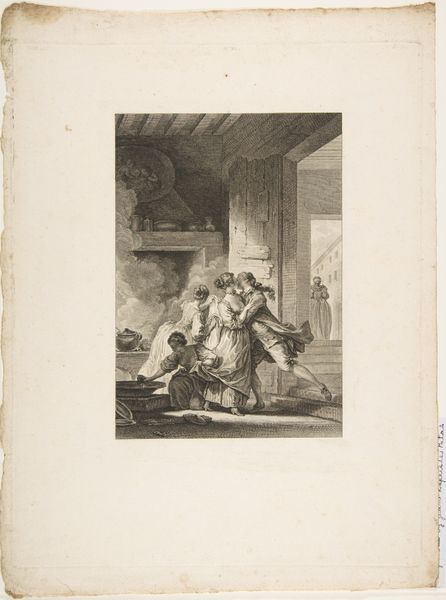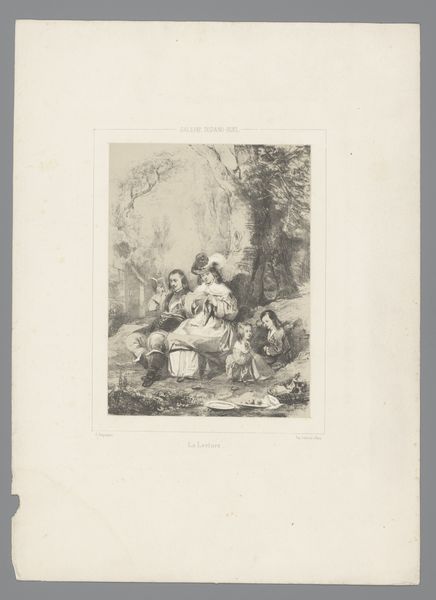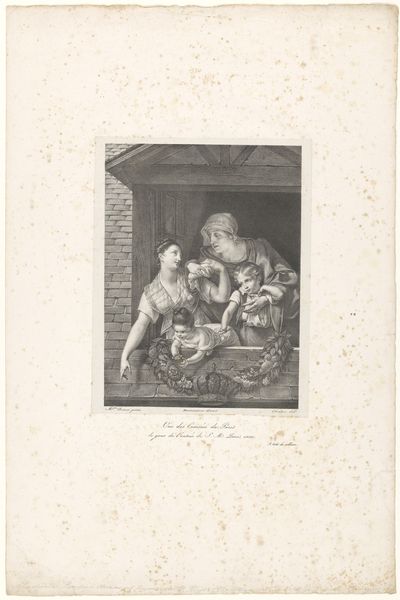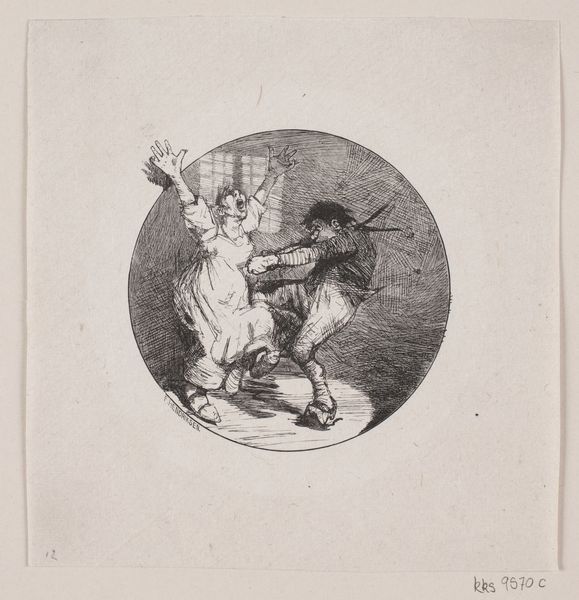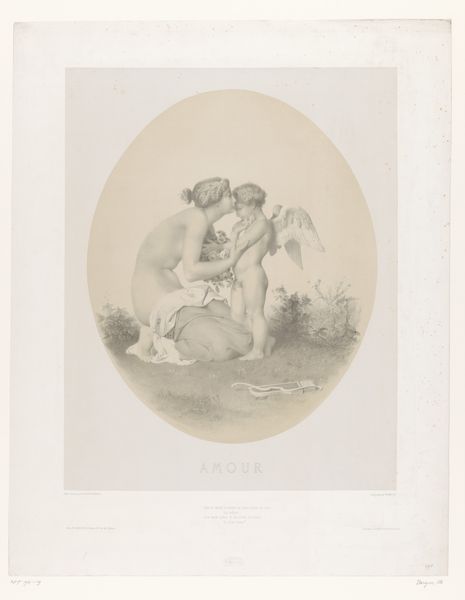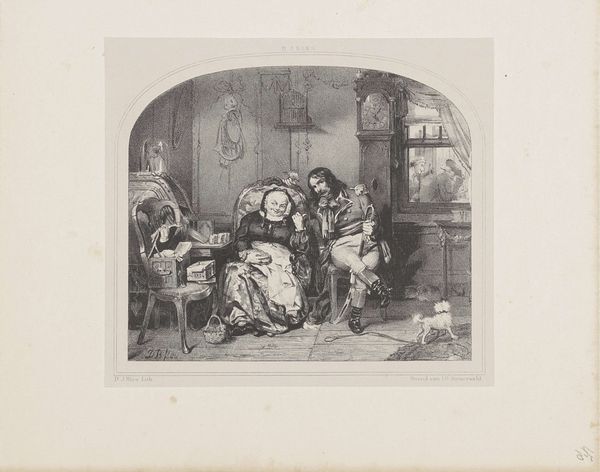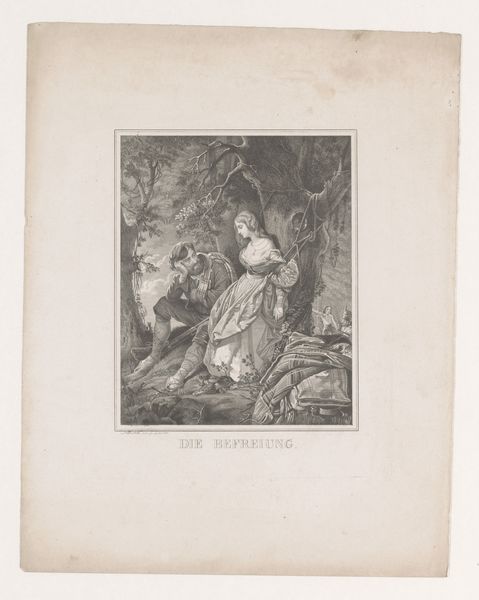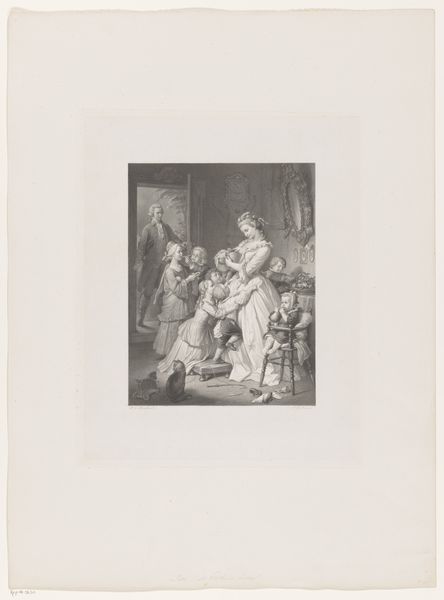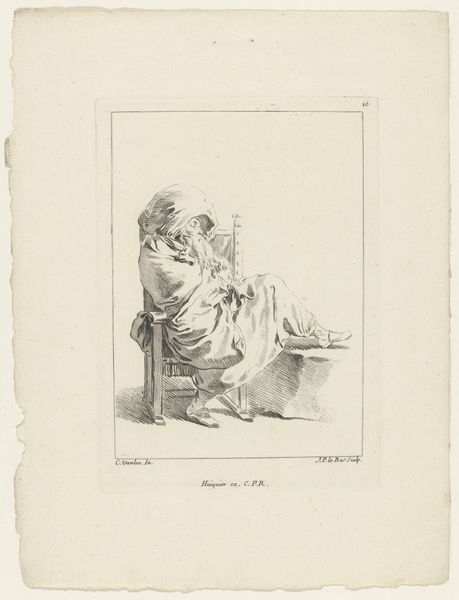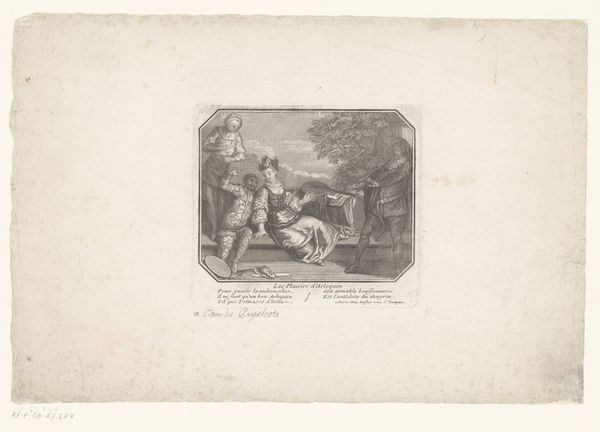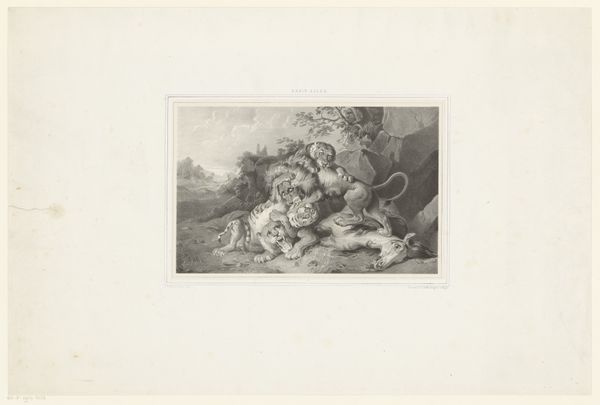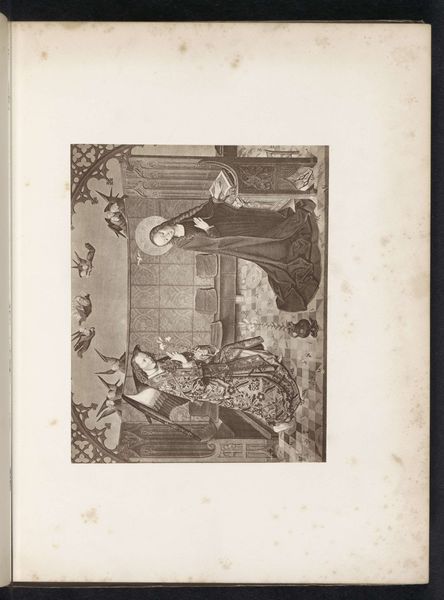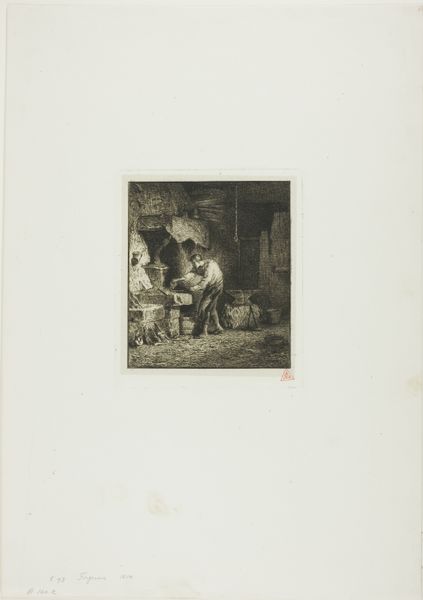
The Happy Family (L'Heureuse fécondité) 1745 - 1806
0:00
0:00
Dimensions: Sheet: 12 1/8 x 13 3/8 in. (30.8 x 34 cm) Image: 7 3/8 x 8 13/16 in. (18.8 x 22.4 cm)
Copyright: Public Domain
Editor: This etching, "The Happy Family" by Jean-Honoré Fragonard, feels quite sentimental to me. The composition within the circle frames the family almost like a little idyllic world. What can you tell me about this work? Curator: Looking through a materialist lens, let's consider how prints like this one functioned. Fragonard wasn't just making "high art," he was participating in a broader system of production. Think about the labor involved in creating the plate, the paper, and the dissemination of these images. Editor: So, it's less about Fragonard's genius and more about the mechanics of getting art to the masses? Curator: Exactly. The choice of etching and engraving made the artwork accessible, reproducible, and therefore consumable by a wider audience. It also flattens the artistry and craft of painting down to consumable monochrome for easy digestion of this 'happy family' idyll. How do you think that impacts the interpretation? Editor: I hadn't considered that. It definitely reframes the work; the scene's sentimentality seems…manufactured. Did the burgeoning middle class acquire art differently than nobility? Curator: Precisely. Prints provided a cost-effective alternative to original paintings. They allowed the middle class to participate in visual culture, and perform the trappings of aristocratic taste but for less money. Note how Fragonard blends mythological architectural backgrounds that were once exclusive and replaces those stories with a cozy middle class scene that any print buyer can understand and want to emulate. Is that perhaps a critique? Editor: A critique of bourgeois aspirations, maybe? Or simply a clever catering to a new market? The mass-produced nature challenges this supposed ideal... I think I was initially blinded by the prettiness of the etching itself. Curator: See how deeply understanding of the work and context adds layers to an image of 'happiness'! It becomes both sentimental and an illustration of consumption. Editor: Thanks! This changed my understanding of 18th-century art entirely.
Comments
No comments
Be the first to comment and join the conversation on the ultimate creative platform.
